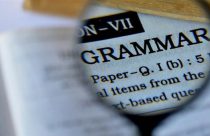Why Is It Important to Use Gender-Inclusive Language in Academic Writing?

The pseudo generic “he,” that is, the usage of “man” to denote all of humanity assumes that the default and normal human being is male. While there are more pressing issues in the inclusive space and endeavor of achieving equality and the fact that the usage of “he” to refer to nonspecific persons does not point to a great conspiracy against women, it still indicates a bias coded into our linguistic inheritance.
Language plays a crucial role in molding behavior and perceptions. Moreover, the language used by educators and in academic documents is extremely influential and provides a model for students and society as a whole. Word choices often unconsciously reflect preconceived and wrongful notions about gender roles, and hence we should make a conscious effort to not use language that stereotypes, constrains, or excludes others.
Let’s look at some of the ways we can use gender-inclusive language while writing. However, it is to be noted that gender inclusion need not be unwarranted—it is important to make sure that gender inclusive language does not give rise to disparity between the subject and the pronoun in a document.

Here’s a checklist for gender-related revisions:
- If someone’s gender has been mentioned, was it necessary to do so?
- Does the paper have any occupational (or other) stereotypes?
- Are there same kinds of information and descriptions when writing about people of different genders?









